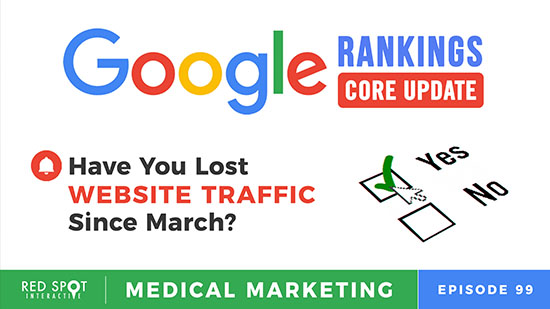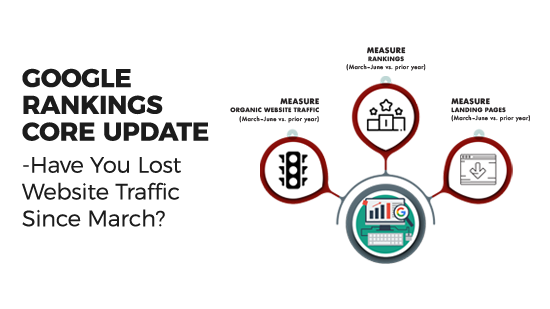How Do You Analyze Your Rankings and Leads?
The first thing you need to do is analyze your rankings and site to see if you have been impacted by it all. First, you need to head to Google Analytics and formulate your analysis around organic website traffic. Then, you should look at it year to date. Once that is complete, you will want to measure your current data and rankings against the prior year. If you see year to date traffic dropping excessively from March to now, you have probably been impacted by the Google core update. You will want to do the same analysis for your rankings in Google Webmaster Tools.
The third thing you can do is in Google Analytics measuring the impact of landing pages. You will measure this by going to behavior within analytics, then site content, then landing pages, and look at the same year to date information. This allows you to understand where you have lost website traffic by pages. This is where you need to apply solutions.
What Solutions are There to the Google Core Update?
The solutions are all based on the problem of the algorithms. These solutions try to solve these issues and make sure that websites are getting ranked for the right reasons. The most effective ways to define how websites are ranked include inbound links, focus keywords, and social media.
Inbound Links
One of the main things that Google wants to see is credit from outside websites. This means that Google is ranking your website based on the number of inbound links. The way to look at this from your perspective is to take advantage of how many links are connecting to your page. You want to ask yourself:
- Do all of my alumni profile pages link to my website?
- Do all of my organizations link to my professional website?
- Do websites such as my local Chamber of Commerce, the Better Business Bureau, and other sites link to mine?
- Do .com sites link to my website?
- Do my business partners have any affiliations that link to my site?
- Do I donate to any charities that can link my sponsorship to my website?
Focus Keywords
Additionally, you want to focus on the keywords that are associated with the landing pages where you lost traffic. You want to build your content around where there has been a reduction in traffic. You can build this content through blogs and messaging with customers through your website. You can also build this through before and after pictures. You want to make sure all of these are targeted towards the keywords.
Social Media
Lastly, your social media can improve your leverage. You want to use your social media with the same strategy as your content. You should publish social media content on the same material as the landing page content. Use subjects where you lost traffic. Use before and after pictures, and use hashtags that associate them with social content.
These tactics will create content and activity within your pages. This should offset any negative impact that you’ve had from the Google rankings.

















